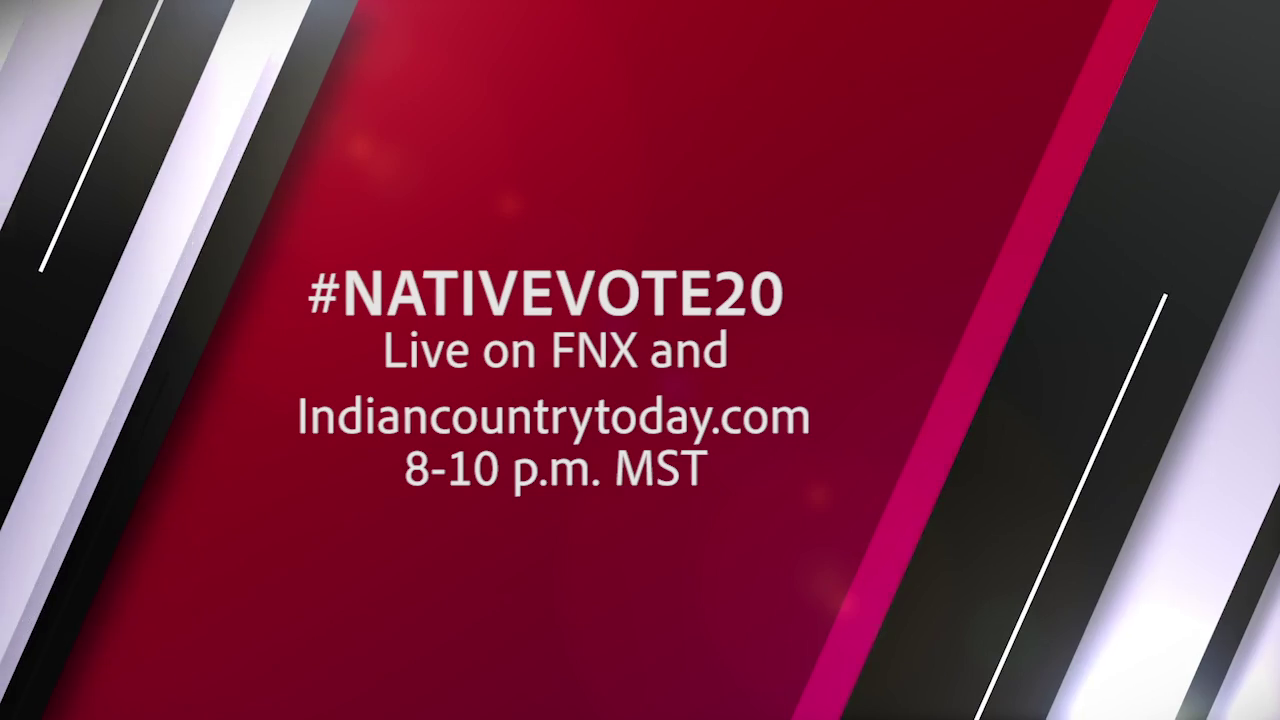Indianz.Com > News > Indian Country Today: The power of the Native vote
Video Player
00:00
00:00
Native vote plays powerful role, especially in swing states
Voting advocates predict Native voters will come out in force despite challenges #NativeVote20
Friday, October 30, 2020
Indian Country Today
Native American and Alaska Native voters have the power to determine the next president.
“Had Native voters turned out in 2016, we would likely have had a very different outcome in the presidential election,” said OJ Semans, executive director of Four Directions Inc., a Native American voting rights advocacy organization. Semans is a member of the Rosebud Sioux tribe.
Native voters stand to play a crucial role in the 2020 election, especially in swing states where they make up significant portions of eligible voters. States in which two major parties have similar levels of support and high numbers of electoral votes are also home to large Native populations.
The approximately 3.7 million Natives and Alaska Natives of voting age are represented in this election’s crucial swing states.
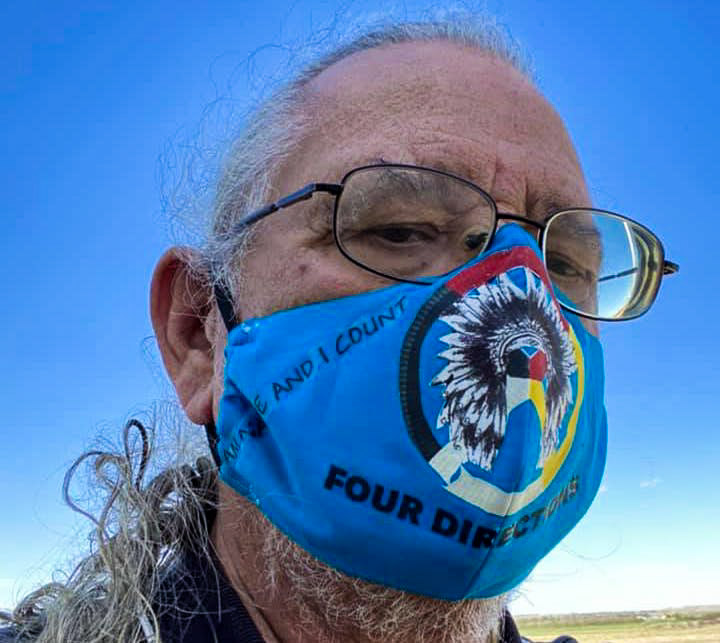
Arizona — 5.6 percent
Colorado — 2.5 percent
Michigan — 1.4 percent
Minnesota — 1.8 percent
Nevada — 2.5 percent
North Carolina — 2.1 percent
Wisconsin — 1.5 percent
At first glance, it might appear that the numbers are insignificant; however, if President Donald Trump’s narrow margin of victory in several states during the 2016 presidential election is any indication, the Native vote stands to play an important role in this election.
“Trump won the state during the 2016 election by 0.7 percent. We could have very well have swung that election,” said Guy Reiter of Menikanaehken Inc., a grassroots organization based on the Menominee reservation in northeast Wisconsin. In addition to working to revitalize its community, Menikanaehken Inc. is working to increase voter engagement and registration.
In the 2016 presidential election, however, only 1.8 million Native voters turned out, about half of the eligible voters.
According to the National Congress of American Indians, the voter rate among Native Americans is five to 14 percentage points lower than that of other racial groups.
Colorado — 2.5 percent
Michigan — 1.4 percent
Minnesota — 1.8 percent
Nevada — 2.5 percent
North Carolina — 2.1 percent
Wisconsin — 1.5 percent
These low rates have been attributed to a number of issues, including barriers to voting such as lack of polling places near or on reservations, voter registration requirements that call for physical mailing addresses (many Native folks on remote reservations maintain post office boxes rather than receive mail at home) and a general history of disenfranchisement and distrust of the federal government that goes back generations. COVID-19 is creating further barriers for Indian Country as many turn to mail in voting as a means to mitigate exposure to the virus that has hit Native communities such as the Navajo Nation and Wisconsin tribes hard. The 9th U.S. Circuit Court of Appeals recently upheld a lower court decision rejecting a lawsuit brought by six Navajo voters seeking to allow an extra 10 days for ballots mailed from the Navajo Nation to be counted. Similarly, the U.S. Supreme Court upheld Wisconsin voting laws rejecting efforts to allow absentee ballots to be counted sent back to election officials on or just before election day. Despite these challenges, Native leaders and voting advocates are confident that this election will be a game changer. According to the newly released Indigenous Futures Survey — directed by IllumiNative, the Native Organizers Alliance and the Center for Native American Youth — Native Americans, especially youth, are highly engaged in the political process. About 5 percent of youth respondents were not old enough to vote in the 2016 election.Voting together means keeping each other safe. Plan now to have everything you need to protect yourself and your community from COVID-19 if you’re voting in person — and tag folks you know are voting in person, and share to keep our communities safe! #TogetherWeVote #NativeVote pic.twitter.com/Zeler5CHFV
— National Congress of American Indians (@NCAI1944) October 27, 2020
A high level of engagement in the political process such as signing petitions, sharing political content online, participating in a community action group, attending a protest both before and after the death of George Floyd, are predictors of greater voter turnout, according to survey authors. The survey was conducted by researchers from the University of Michigan and the University of California, Berkeley from June 23 to Aug. 15, with responses from 6,460 Native people of voting age across the U.S. representing 401 tribes. The survey was conducted online due to restrictions of the pandemic. According to its findings, Native people living in battleground or swing states report higher voting rates than those in other locations. Fifty-one percent of respondents identified as Democrats, 26 percent as independent, 9 percent as Democratic Socialist and 7 percent as Republican. The remainder identified as Libertarian, Green Party or Socialist. The large number of Native candidates in local and state elections will also influence greater voter turnout, according to the survey’s authors. Native voting rights advocates such as Reiter and Semans agree that more Native people will vote during this election, especially youth. “There’s greater interest in this election cycle, especially among young people. They are really excited about voting; they are seeing the opportunity for us to make sure that Wisconsin goes in a way that represents Indigenous people,” Reiter said. According to Maria Dadger, executive director of the Intertribal Council of Arizona based in Phoenix, Native youth have been especially responsive to the council’s social media voting outreach. “The response from Native voters between 18-24 has been phenomenal,” she said. Environmental quality, health and education are huge issues of concern for tribes, according to Dadger. Indeed, researchers with the Indigenous Futures Survey found that health care, especially mental health, and the environment were among respondents’ top concerns.As Indigenous peoples we have specific issues that directly impact our lives from water rights, environmental impacts, energy, housing, Indian child welfare issues, and federal spending or Indian Country for education and healthcare.#NativesVote
— IllumiNative (@IllumiNative) October 29, 2020
Ledger art by @AvisCharley pic.twitter.com/QI4omq4AAk
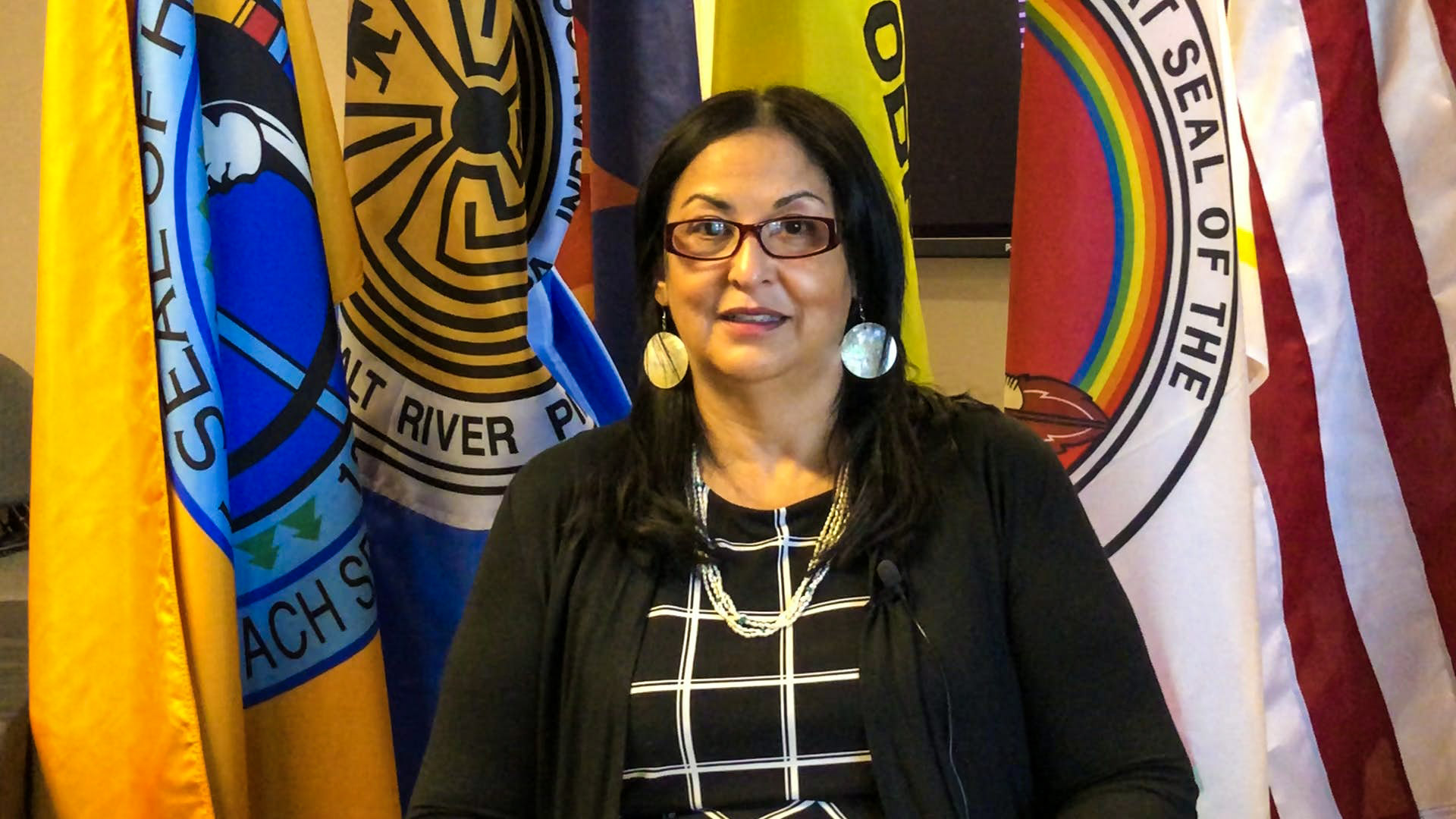
Candidates take notice
Notably both the Biden and Trump campaigns are courting the Native vote; Joe Biden and Kamala Harris met with tribal leaders last month in Phoenix and later released their 15 page “Biden-Harris Plan for Tribal Nations.”
According to their plan, a Biden administration will fully fund the Indian Health Service and potentially make funding mandatory rather than discretionary. The Biden-Harris plan also commits to aim to achieve net-zero emissions and ensure that investments in clean energy reach Native communities. Biden has also promised to end fossil fuel subsidies.
Later in October, Trump released his three-page policy vision for Indian Country, shortly after his son Donald Trump Jr. launched the Native Americans for Trump coalition in Williams, Arizona.
In his “Putting America’s First Peoples First: Forgotten More!” plan, Trump promised to respect tribal sovereignty and self-determination, promote safe communities, build a thriving economy with improved infrastructure, honor Native American heritage, improve education and deliver health care.
In a follow-up email to Indian Country Today’s request for details about Trump’s plans to deliver health care, Jennifer Kelly, advisor for regional communications and Hispanic media engagement wrote: “The Federal government remains committed to meeting existing federal trust and treaty obligations. Unfortunately, politicians of both parties, including some who have been in Washington, DC for several decades have fallen short. Thankfully, President Trump is not afraid to tackle long-overlooked challenges, just as he has done with the issue of Missing and Murdered Native Americans. A few examples of elevating the commitment to the trust relationship in the plan surround the provisions to improve education and healthcare in Indian Country. President Trump’s FY 2021 budget, for example, proposed a $185 million (3 percent) increase for Indian Health Service (IHS) funding totaling $6.2 billion. The President also launched the IHS Task (Force) to tackle long overlooked abuses in the IHS.”
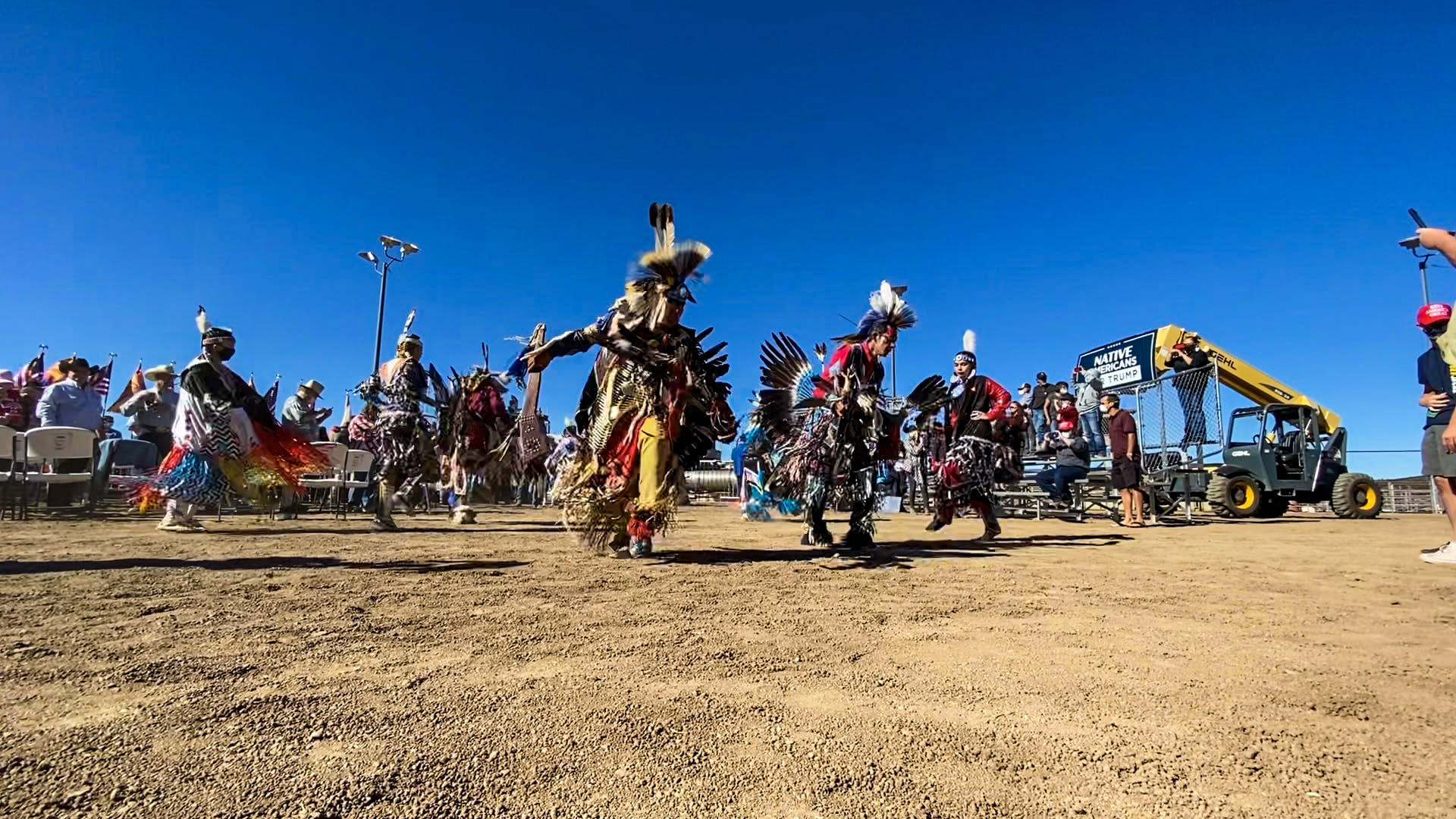
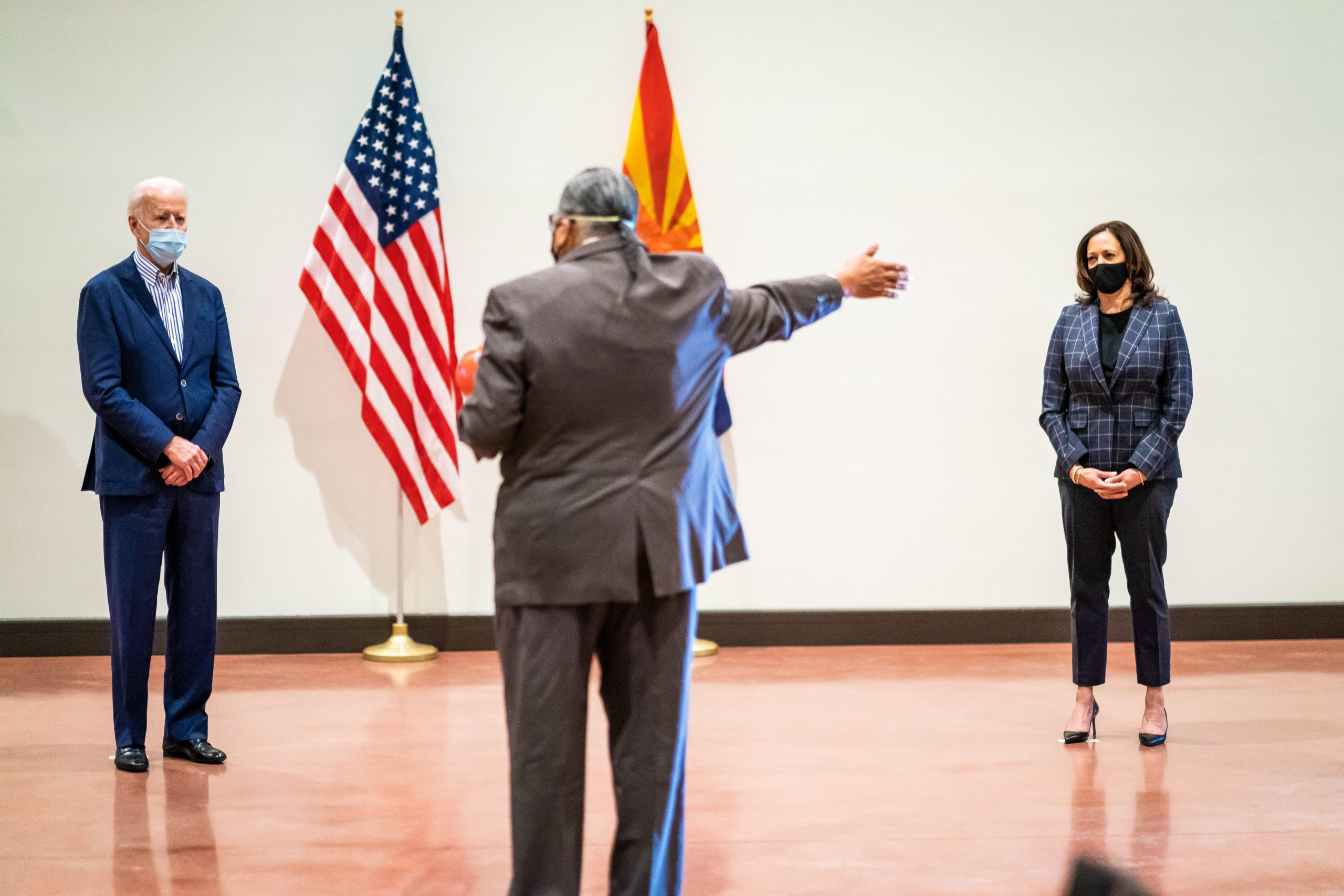
Mary Annette Pember, a citizen of the Red Cliff Ojibwe tribe, is a national correspondent for Indian Country Today. Follow Pember on Twitter @mapember. Based in Cincinnati, Ohio. Pember loves film, books and jingle dress dancing.
This article originally appeared on Indian Country Today LLC, a nonprofit, public media enterprise. ICT does not charge for subscriptions and tribal media (or any media, for that matter) can use the publiciation’s content for free. Contribute to the nonprofit Indian Country Today. Note: Thumbnail photo of final presidential debate by Adam Schultz / Biden for President
Search
Filed Under
Tags
More Headlines
Native America Calling: Contemporary Pueblo architects reclaim ancestral knowledge
Native America Calling: Flexing tribal strength during turbulent times
National Indian Health Board names permanent chief executive amid major change
Native America Calling: Medicaid, Medicare, health care, and food safety on the line
Montana Free Press: Blackfeet Nation citizens cite treaty rights in lawsuit over tariffs
Cronkite News: A ‘mural with a message’ rises in Arizona
Chuck Hoskin: Cherokee Nation is an economic powerhouse
Native America Calling: Philanthropy fills in the gaps
AUDIO: Examining 50 years of the Indian Self-Determination and Education Assistance Act in Indian Country
NAFOA: 5 Things You Need to Know this Week (April 7, 2025)
Native America Calling: The next 50 years of self-governance
Cronkite News: Food sovereignty movement promotes Native foods
VIDEO: Examining 50 years of the Indian Self-Determination and Education Assistance Act in Indian Country
Native America Calling: Fresh Native creativity with a new play and new television show
AUDIO: Native American Education – Examining Federal Programs at the U.S. Department of Education
More Headlines
Native America Calling: Flexing tribal strength during turbulent times
National Indian Health Board names permanent chief executive amid major change
Native America Calling: Medicaid, Medicare, health care, and food safety on the line
Montana Free Press: Blackfeet Nation citizens cite treaty rights in lawsuit over tariffs
Cronkite News: A ‘mural with a message’ rises in Arizona
Chuck Hoskin: Cherokee Nation is an economic powerhouse
Native America Calling: Philanthropy fills in the gaps
AUDIO: Examining 50 years of the Indian Self-Determination and Education Assistance Act in Indian Country
NAFOA: 5 Things You Need to Know this Week (April 7, 2025)
Native America Calling: The next 50 years of self-governance
Cronkite News: Food sovereignty movement promotes Native foods
VIDEO: Examining 50 years of the Indian Self-Determination and Education Assistance Act in Indian Country
Native America Calling: Fresh Native creativity with a new play and new television show
AUDIO: Native American Education – Examining Federal Programs at the U.S. Department of Education
More Headlines
